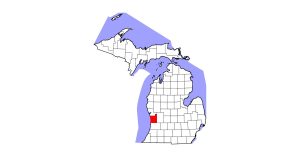Indoor Arena Dust: Damaging to Horse and Rider

“When we think about equine respiratory problems, we often critically consider the common husbandry (such as stabling) conditions, but we also need to consider the dust exposition in the arena,” said Nicole Kemper, PhD, professor at the University of Veterinary Medicine Hannover Institute for Animal Hygiene, in Germany. “It’s not the main influencing factor, but it might be an additional impact.”
Kemper and her doctoral student Torsten Lühe, both active riders, decided to look into the air quality in indoor arenas when they found that nearly no research has been carried out on the topic. They tested the air in four different indoor arenas in Germany, each with a different kind of layout—some with stables attached, some independent. One had sand/woodchip footing, and the others had sand only, Kemper said. All the arenas were watered daily during the hottest months of the year.
They tested four positions in each arena, once a month for a year. In each position inside the arena, they tested two heights: horse-nose level and rider-nose level. Arenas were air-tested before and after a half-hour riding session by one horse-rider team.
As expected, dust levels were significantly higher after the riding session than before. And those levels were greater at horse-nose level than at rider-nose level, although there was relatively little difference between the two.
Watering made a big difference, Kemper said. In the warmer months, workers sprayed down the arena once a day, which was sufficient to keep the dust levels significantly lower than when the arenas were not watered.
Footing also made a difference, she said. The sand/woodchip mix resulted in significantly less dust in the air than sand alone.
Stable design also appeared to be an important factor in dust production. Dust levels were highest in the arena that was in the same building as the stalls, separated only by a half-wall. Another arena also shared a building with the stalls, but there was a full wall separating them. That arena had its own separate vents, which appeared to help keep dust levels lower.
Even so, all the arena setups had dust levels—and more specifically, dust particle sizes of less than 0.5 micrometers, which can lodge in the alveoli (microscopic air sacs located at the end of the bronchioles where gas exchange—or respiration—occurs) and contribute to airway disease. The vast majority of particles, regardless of time of year or arena type, were smaller than 0.5 micrometers, and in fact, most of those were actually less than 0.3 micrometers. What’s more, the average concentrations of particles in this study were up to 10 times higher than those found in towns with air pollution. Considering that fact, it’s not surprising that 35% of riding instructors in a recent survey showed a prevalence of chronic bronchitis, Kemper said, and that recurrent airway obstruction (also known as heaves) in riding horses is widespread.
“Watering seems to be an effective measure, so stable owners should give special consideration to this point,” Kemper said. “Footing should be suitable and renewed regularly. Training outside in fresh air, whenever possible, is also a good option.”
The study, “Factors associated with dust dispersed in the air of indoor riding arenas,” will appear in an upcoming issue of the Equine Veterinary Journal.

Written by:
Christa Lesté-Lasserre, MA
Related Articles
Stay on top of the most recent Horse Health news with















